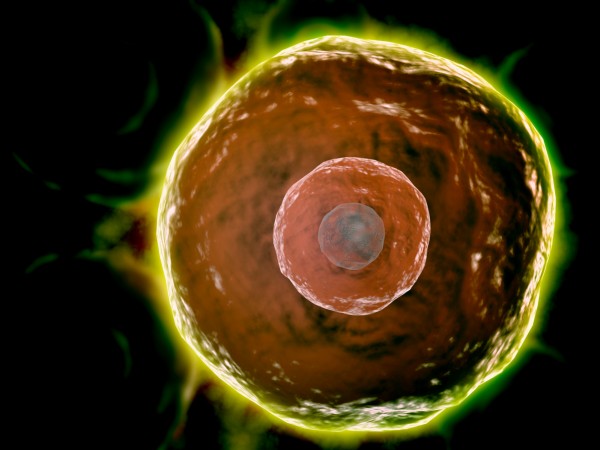Article successfully added.
CyFlow™ CD3 Pacific Orange™

| Application: | Flow cytometry |
| Clonality: | monoclonal |
| Target Species: | Human, Non-Human Primates |
| Regulatory Status: | RUO |
| Source Species: | Mouse |
| Field of Interest: | Immunophenotyping |
| Isotype: | IgG1 |
| Laser: | Violet |
| Antigen: | CD3 |
| Alternative Name: | Leu4, T3 |
| Clone: | UCHT1 |
| Format/Fluorochrome: | Pacific Orange™ |
| Excitation Maximum: | 400 nm |
| Emission Maximum: | 551 nm |
| Order number: | AR027461 |
For Research Use Only
Not for use in diagnostic or therapeutic procedures.
HLDA Workshop HLDA I—WS Code T 3 HLDA III—WS Code T 126 HLDA III—WS Code T 471 HLDA VI—WS... more
Product information "CyFlow™ CD3 Pacific Orange™"
| HLDA Workshop | HLDA I—WS Code T 3 HLDA III—WS Code T 126 HLDA III—WS Code T 471 HLDA VI—WS Code T 6T-CD3.1 |
| Quantity | 100 tests |
| Volume | 0.4 mL |
| Immunogen | Human thymocytes followed by Sezary T cells |
| Background Information | CD3 complex is crucial in transducing antigen-recognition signals into the cytoplasm of T cells and in regulating the cell surface expression of the TCR complex. T cell activation through the antigen receptor (TCR) involves the cytoplasmic tails of the CD3 subunits CD3γ, CD3 δ, CD3ε and CD3ζ. These CD3 subunits are structurally related members of the immunoglobulins superfamily encoded by closely linked genes on human chromosome 11. The CD3 components have long cytoplasmic tails that associate with cytoplasmic signal transduction molecules. This association is mediated at least in part by a double tyrosine-based motif present in a single copy in the CD3 subunits. CD3 may play a role in TCR-induced growth arrest, cell survival and proliferation. The CD3 antigen is present on 68-82% of normal peripheral blood lymphocytes, 65-85% of thymocytes and Purkinje cells in the cerebellum. It is never expressed on B or NK cells. Decreased percentages of T lymphocytes may be observed in some autoimmune diseases. |
| Usage | The reagent is designed for Flow Cytometry analysis of human blood cells. Recommended usage is 4·µl reagent·/ 100·µl of whole blood or 10^6 cells in a suspension. The content of a vial (0.4 ml) is sufficient for 100 tests. |
| Storage Buffer | The reagent is provided in stabilizing phosphate buffered saline (PBS) solution, pH ≈7.4, containing 0.09% (w/v) sodium azide and 0.2% (w/v) BSA. |
| Storage | Avoid prolonged exposure to light. Store in the dark at 2-8°C. Do not freeze. |
| Stability | Do not use after expiration date stamped on vial label. |
Similar products
FITC
CyFlow™ CD1a FITC
| Antigen: | CD1a |
| Clone: | SK9 |
| Application: | Flow cytometry |
| Regulatory Status: | RUO |
| Target Species: | Human | Quantity: | 100 tests |
PE
CyFlow™ CD1a PE
| Antigen: | CD1a |
| Clone: | SK9 |
| Application: | Flow cytometry |
| Regulatory Status: | RUO |
| Target Species: | Human | Quantity: | 100 tests |
APC
CyFlow™ CD1a APC
| Antigen: | CD1a |
| Clone: | SK9 |
| Application: | Flow cytometry |
| Regulatory Status: | RUO |
| Target Species: | Human | Quantity: | 100 tests |
Purified
CyFlow™ CD1a Purified
| Antigen: | CD1a |
| Clone: | SK9 |
| Application: | Flow cytometry, Immunoprecipitation |
| Regulatory Status: | RUO |
| Target Species: | Human | Quantity: | 0.1 mg |
FITC
CyFlow™ CD1b FITC
| Antigen: | CD1b |
| Clone: | SN13 |
| Application: | Flow cytometry |
| Regulatory Status: | RUO |
| Target Species: | Human | Quantity: | 100 tests |
Purified
CyFlow™ CD1b Purified
| Antigen: | CD1b |
| Clone: | SN13 |
| Application: | Flow cytometry, Immunohistochemistry, Immunoprecipitation |
| Regulatory Status: | RUO |
| Target Species: | Human | Quantity: | 0.1 mg |
PE
CyFlow™ CD1c PE
| Antigen: | CD1c |
| Clone: | L161 |
| Application: | Flow cytometry |
| Regulatory Status: | RUO |
| Target Species: | Human | Quantity: | 100 tests |
Purified
CyFlow™ CD1c Purified
| Antigen: | CD1c |
| Clone: | L161 |
| Application: | Flow cytometry, Immunohistochemistry, Immunoprecipitation |
| Regulatory Status: | RUO |
| Target Species: | Human | Quantity: | 0.1 mg |
